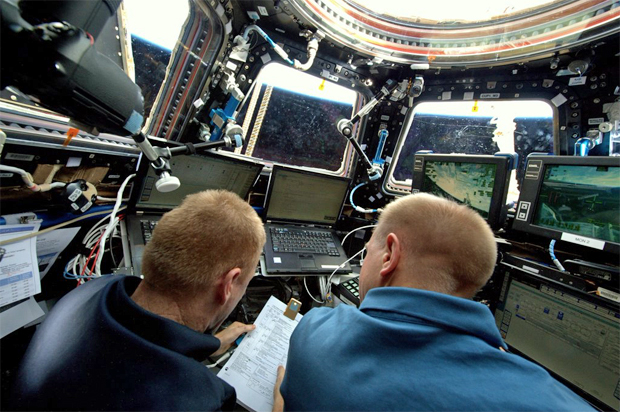Cargo ship brings 3.6 tons of supplies to space station
A cargo ship loaded with 3.6 tons of equipment, crew supplies and research gear was captured by the International Space Station's robot arm early Saturday to close out a smooth three-day rendezvous.
The Orbital ATK Cygnus spacecraft, which launched Tuesday night atop a United Launch Alliance Atlas 5 rocket, pulled up to within about 30 feet of the space station and then stood by while astronaut Tim Kopra, operating the lab's robot arm, locked onto a grapple fixture at 6:51 a.m. EDT (GMT-5).
Flight controllers at the Johnson Space Center in Houston then took over arm operations and carefully pulled the cargo craft in for berthing at the Earth-facing port of the station's central Unity module. After a bit of a struggle getting the supply ship precisely aligned, motorized bolts drove home to lock the Cygnus in place.
Kopra and his crewmates plan to open the capsule Sunday to begin the process of moving equipment and supplies into the station. At the same time, they will replace the off-loaded cargo with trash and no-longer-needed gear. The cargo ship is expected to remain attached to the station for 55 days, departing May 20.
The Cygnus is the first of three cargo ships expected to reach the station over the next 15 days, a record for space station operations. A Russian Progress freighter, scheduled for launch next Thursday, will reach the station on April 2, and a SpaceX Dragon supply ship is set for launch April 8, arriving two days later.
The Dragon's berthing at the Harmony module's Earth-facing port will mark the first time two U.S. cargo ships have been attached to the station at the same time, joining the Cygnus, two Progress freighters and a pair of Soyuz crew ferry craft. All told, the three cargo ships will deliver some 12 tons of supplies and equipment.
The Cygnus, making Orbital ATK's fifth operational station resupply flight -- its second since a catastrophic October 2014 launch failure -- is loaded with 1,713 pounds of science gear, 2,511 pounds of crew supplies, 2,442 pounds of station hardware and another 550 pounds of computer and spacewalk equipment.
The gear includes 29 small "nano" satellites, a 3-D printer and experiments in a variety of fields, including one to study mechanical "grippers" that work on the same principal as a gecko's sticky feet, another to spectroscopically study meteor trails from above to determine their chemical constituents and one to learn more about how the soil of airless moons, comets and asteroids behaves.
One experiment will remain aboard the Cygnus and not be activated until after the spacecraft departs in May. The Spacecraft Fire Experiment, or Saffire, will ignite a relatively large piece of composite material to study how flames propagate in the absence of gravity. The goal is to learn more about fire prevention and safety in spacecraft.
The actual burning will be contained inside the Saffire experiment housing aboard Cygnus, but Kopra called down for additional details after the cargo ship was captured.
"We're somewhat familiar with the experiment that's in Cygnus called Saffire, but we wanted to see if it would be possible to send up some additional technical and safety information about the experiment," he called.
"Yes, we can put that together and get it up to you," Jay Marschke replied from mission control.

